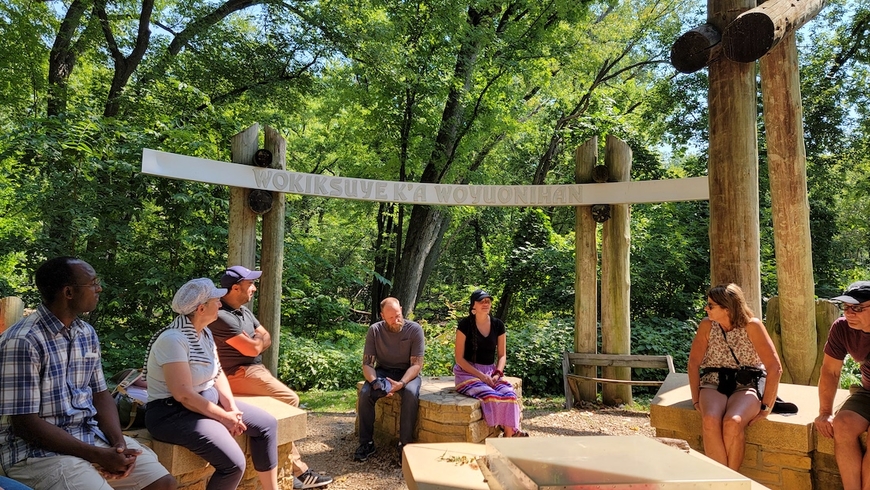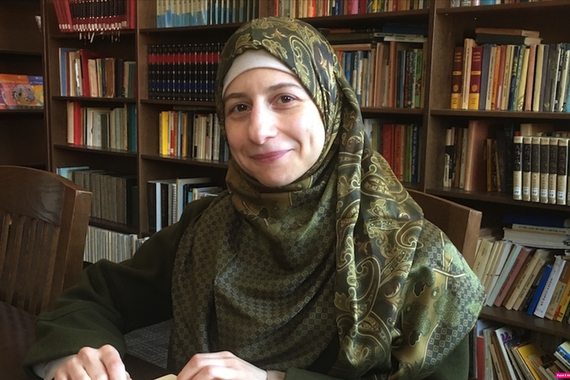The Land and our Dakota Neighbors
Land acknowledgements have become commonplace in recent years, but how many of us have delved deeper into the complex and painful histories of the land we live, work, and play on?
After a week filled with interesting and inspiring training sessions, meetings, and staff development activities, many members of the Department of French & Italian participated in a Friday outing to Fort Snelling State Park. There they were joined by Park Ranger Kao Thao and two guests from the Lower Phalen Creek Project on the east side of Saint Paul. Ben Gessner is Exhibits and Programs Manager at the Wakan Tipi Center. Mishaila Bowman, who worked at LPCP as their outreach and communications specialist and who is also Dakota, was our guide to the Dakota connections to this land and spoke about her personal connection to it.
With box lunches in their laps, the group was privileged to hear first from Park Ranger Thao and then Mishaila Bowman. Mishaila helped the group understand a bit of the history of the Dakota people and shared the story of how they chose to settle in this significant landscape, which lies at the confluence of the Minnesota and Mississippi Rivers and is a very sacred place to the Dakota.
The word bdote can refer to any place where waters converge, but many Dakota consider this particular location to be a sacred place of creation. The Bdote Memory Map site tells us that "the origin stories of the Bdewakantunwan Dakota (one of the Seven Fires of the Dakota Oyate), the point where the rivers come together here, the Bdote, is the center of the earth. It is, we are taught by the Bdewakantunwan, where the Dakota people began." The Bdote area includes many locations with historic as well as contemporary significance to the Dakota people such as Wakan Tipi (Carver's Cave), Mni Owe Sni (Coldwater Spring), and Oheyawahi (Pilot Knob).
This place also has very painful recent history for the Dakota, as it was the site of a concentration camp that held approximately 1600 Dakota non-combatants at the close of the US-Dakota War of 1862. Although this was not a death camp, it was a part of the genocidal policies pursued against Indigenous people throughout the US. In May of 1863, those who survived the winter were loaded aboard steamers and ultimately taken to a desolate reservation at Crow Creek, Dakota Territory, where many more died. The photo above was taken at the memorial that honors the Dakota, many of them women and children, who were imprisoned there.
Mishaila is an exquisite story teller and had everyone listening with rapt attention to stories and legends passed down through the oral tradition. Her presentation revealed that much of the Dakota language and traditions are present in our lives, although we often don't recognize it.
Our group was then led by Park Ranger Thao on a nature walk through a portion of the park. He introduced the group to the rich natural resources that exist there, as well as the many activities that are available to the public at the state park. It was a wonderful two and a half hours and the department is hoping to repeat the visit next year.


